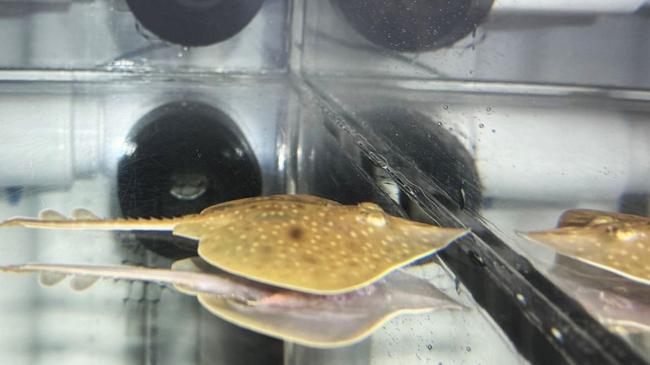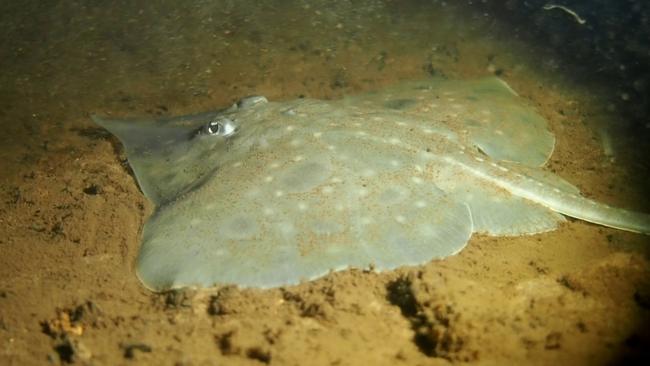Baby skate bred in captivity at University of Tasmania’s Institute for Marine and Antarctic Studies
A baby Maugean skate has been hatched for the first time in captivity, raising hopes for the critically endangered species. Here’s what it means for the plight of the species.

Tasmania
Don't miss out on the headlines from Tasmania. Followed categories will be added to My News.
A baby Maugean skate has been hatched for the first time in captivity, raising hopes for the critically endangered species.
The program was established to protect the ancient species in response to significant declines in the Maugean skate population in Macquarie Harbour, Tasmania – their last known habitat, which is under pressure from the impact of human activity including aquaculture, dams and climate change.
IMAS researcher Jayson Semmens said the baby skate was a huge breakthrough in efforts to save the skate from extinction.
“We’ve been trialling captive holding and rearing methods for two years with other skate species, so successfully producing our first hatchling from a captive-laid egg for this very unique skate is really something to celebrate,” Professor Semmens said.

“The eggs take around seven months to develop, with the first healthy female skate hatchling arriving on the 10th of July.
“The adult female has been laying eggs since her arrival last December – two at a time, every four days on average – and has produced over 100 eggs to date. So we’re preparing for more hatchlings to make their appearance any time now.”

The IMAS team also brought 50 wild-laid eggs into captivity in December, with over half of those viable and producing healthy hatchlings, but captive egg laying is another way to rapidly increase the numbers of animals in captivity.
“Since December, the program has evolved quickly from simply knowing if we can safely hold skate and their eggs, to confirming that not only can this be done, but captive females can rapidly contribute to the number of eggs in captivity – and the embryos can develop into viable hatchlings,” IMAS researcher David Moreno said.
“We also have a captive male, but interestingly it is not the father of the new hatchling. “Instead, the female is fertilising her eggs with sperm she’s stored from previously mating in Macquarie Harbour, so this sperm could come from several males”.
Minister for Parks and Environment Nick Duigan welcomed the new baby skate.
“This represents an important milestone towards the development of a captive breeding program, established as one of a range of measures to protect the endangered Maugean skate,” he said.
More Coverage
Originally published as Baby skate bred in captivity at University of Tasmania’s Institute for Marine and Antarctic Studies





